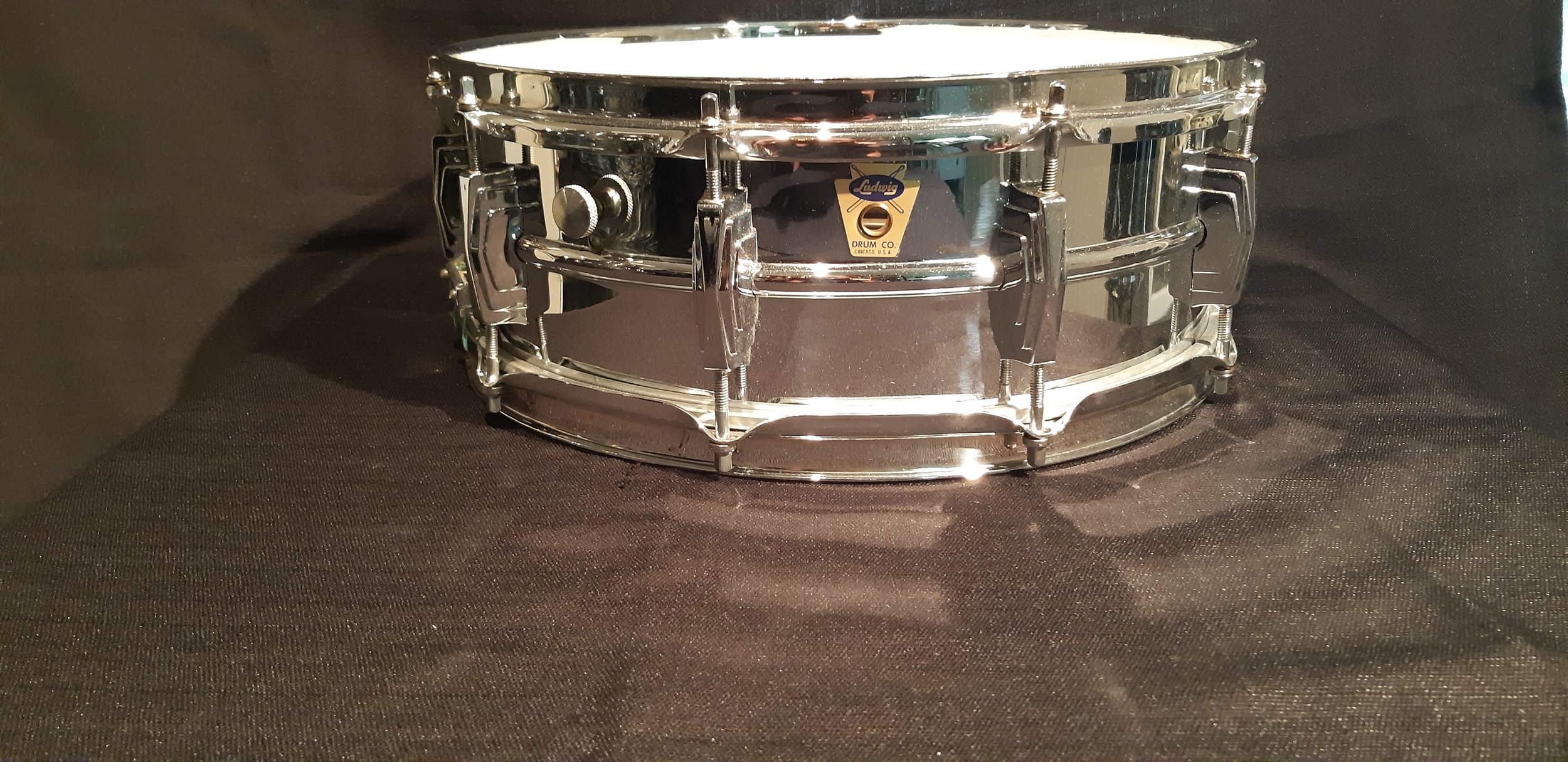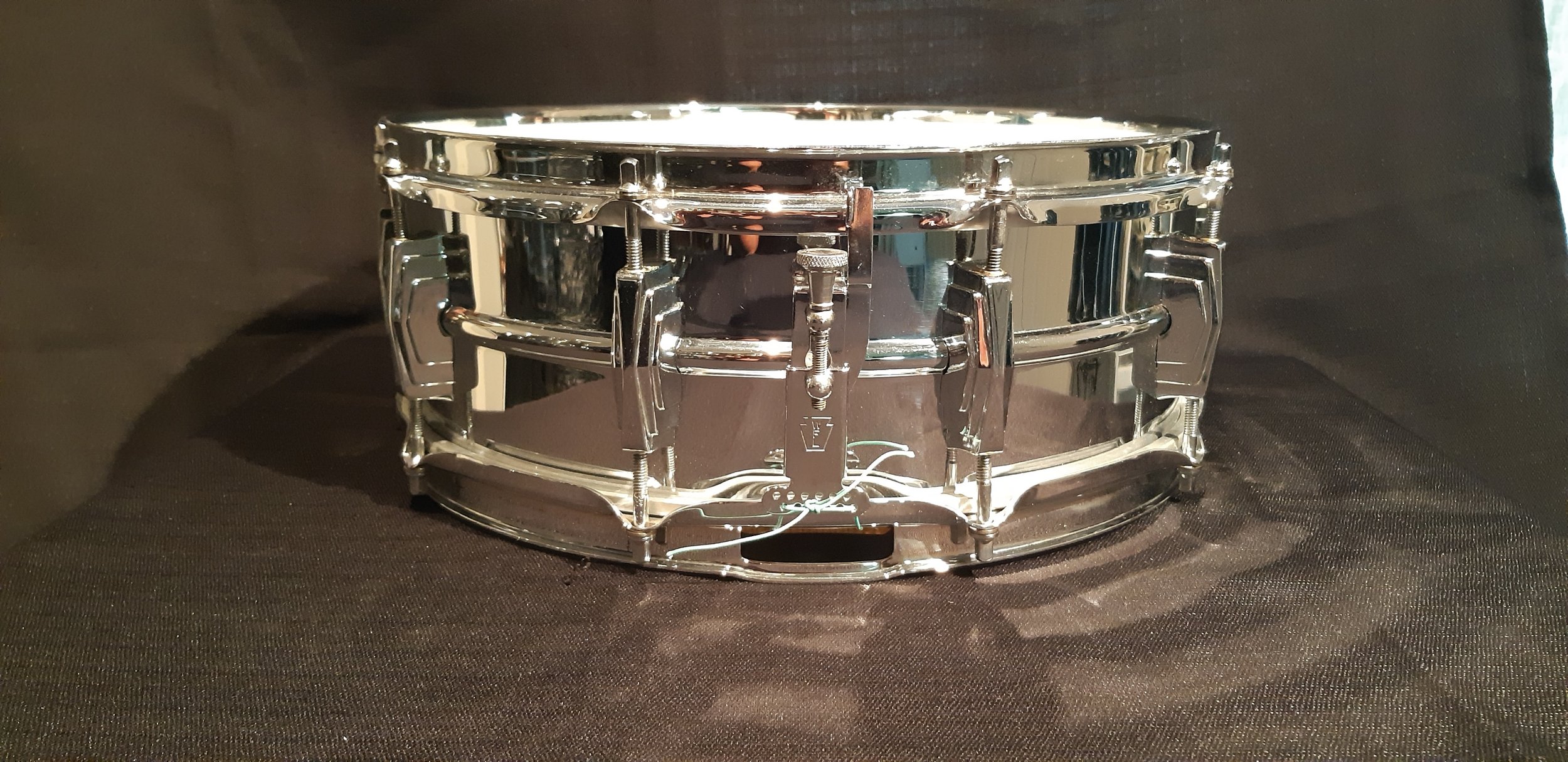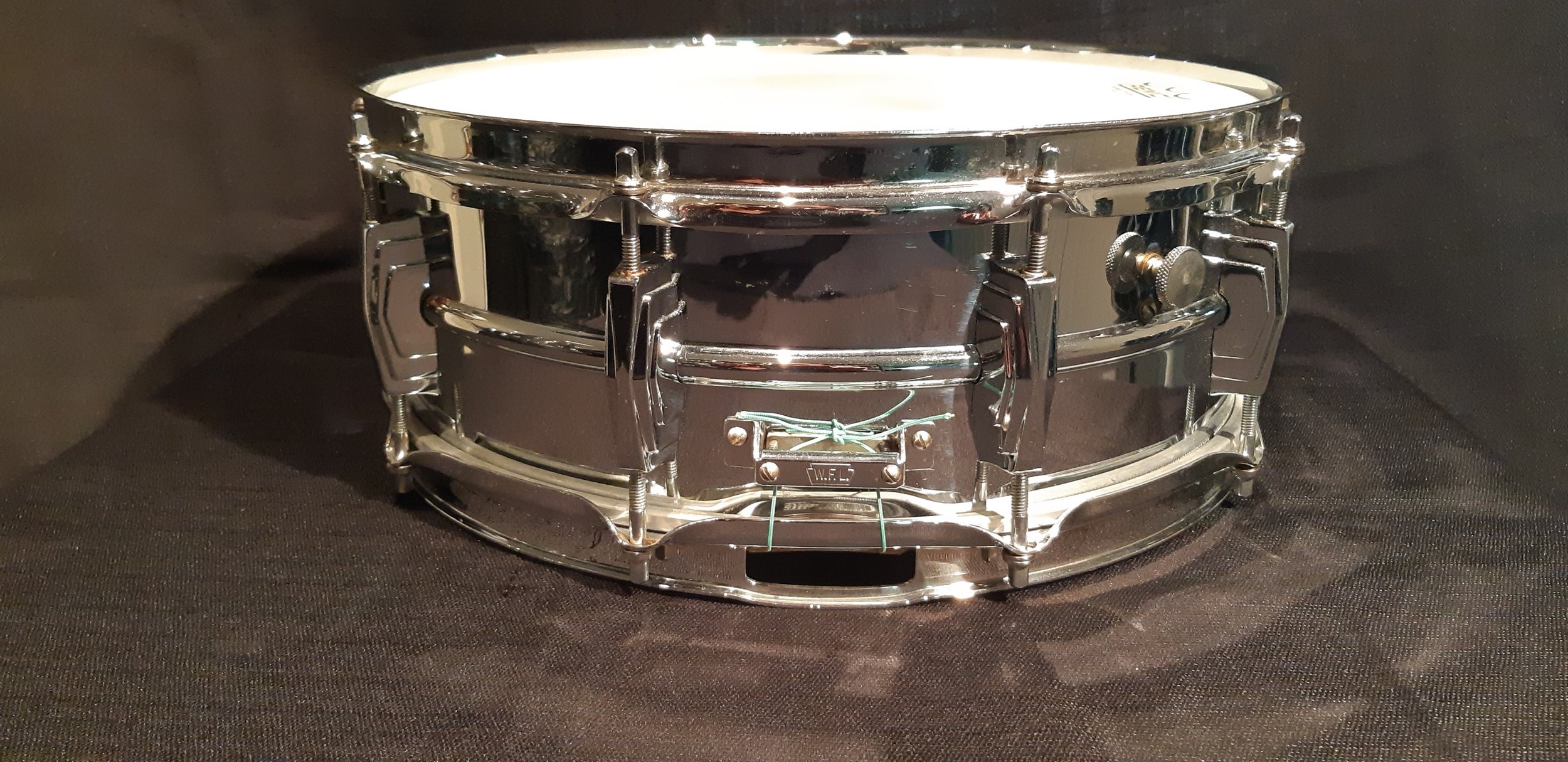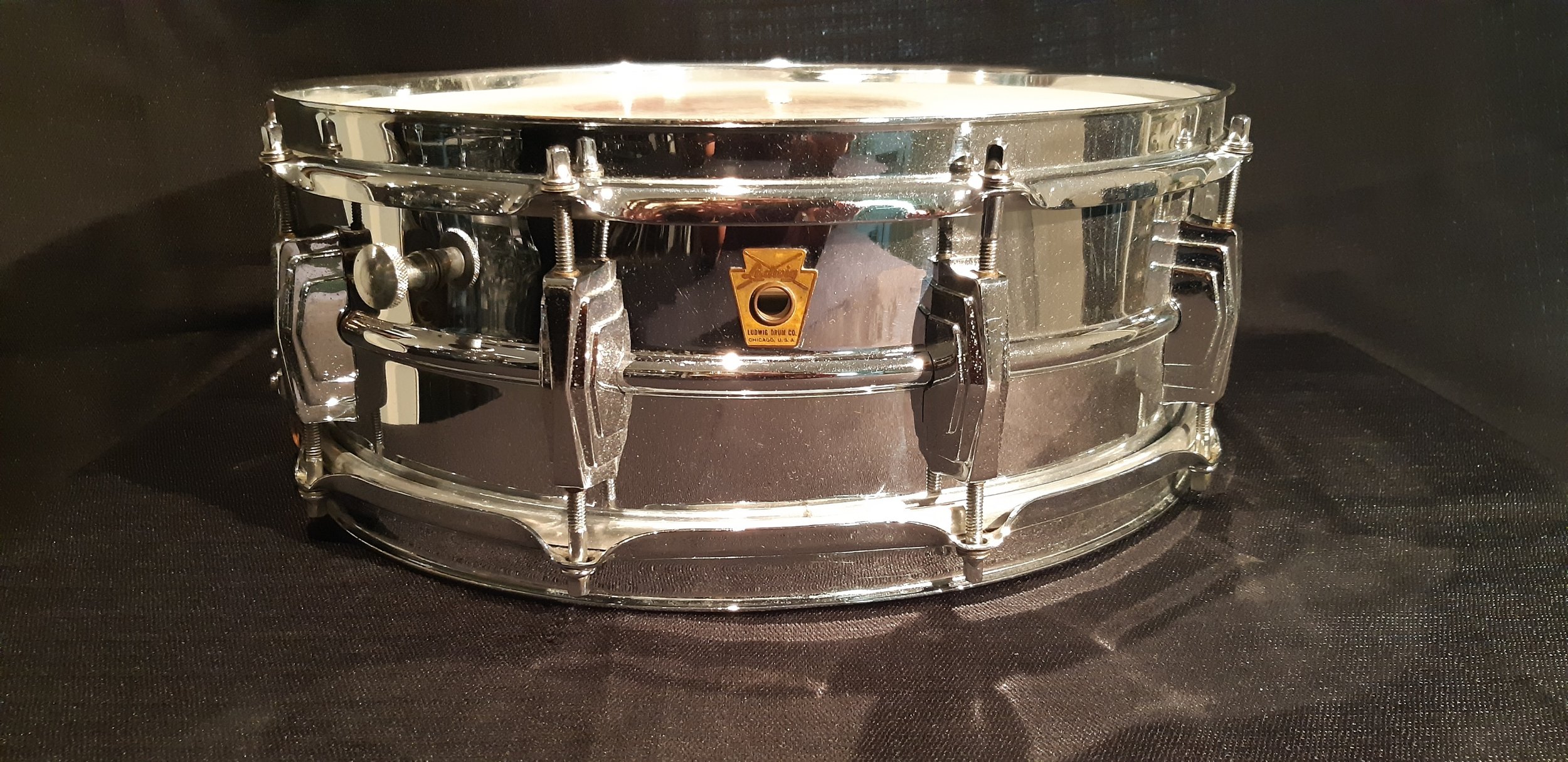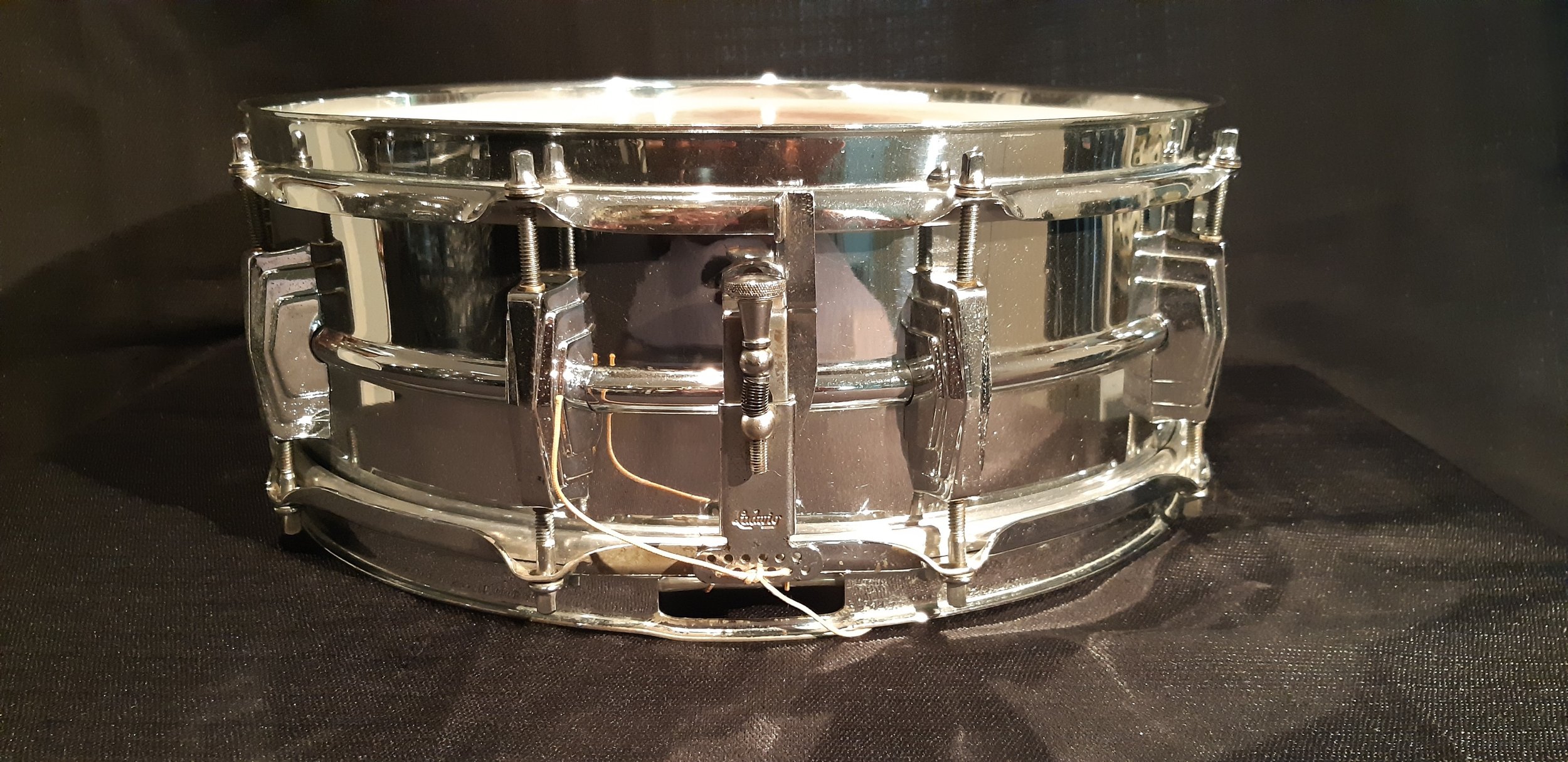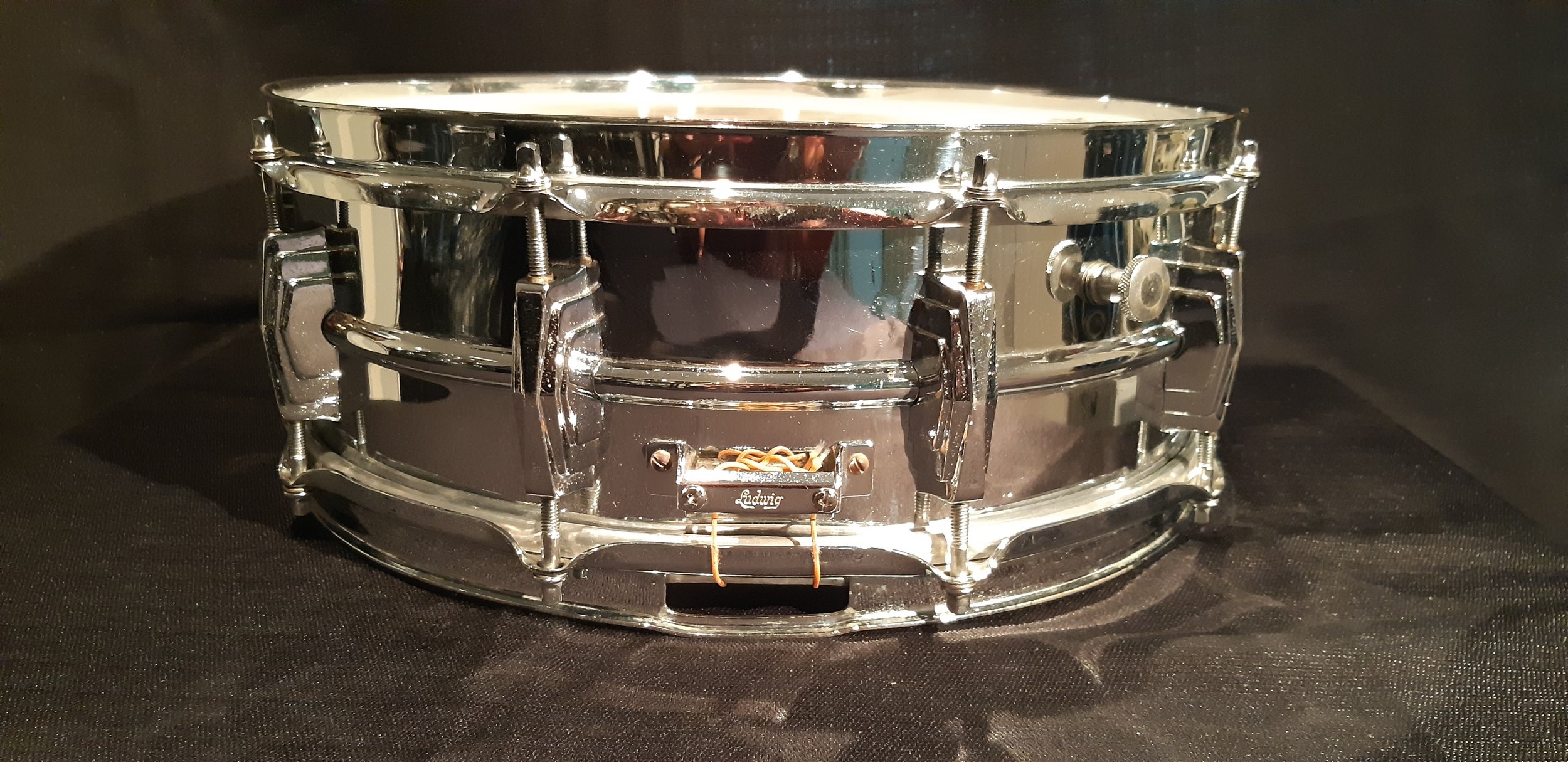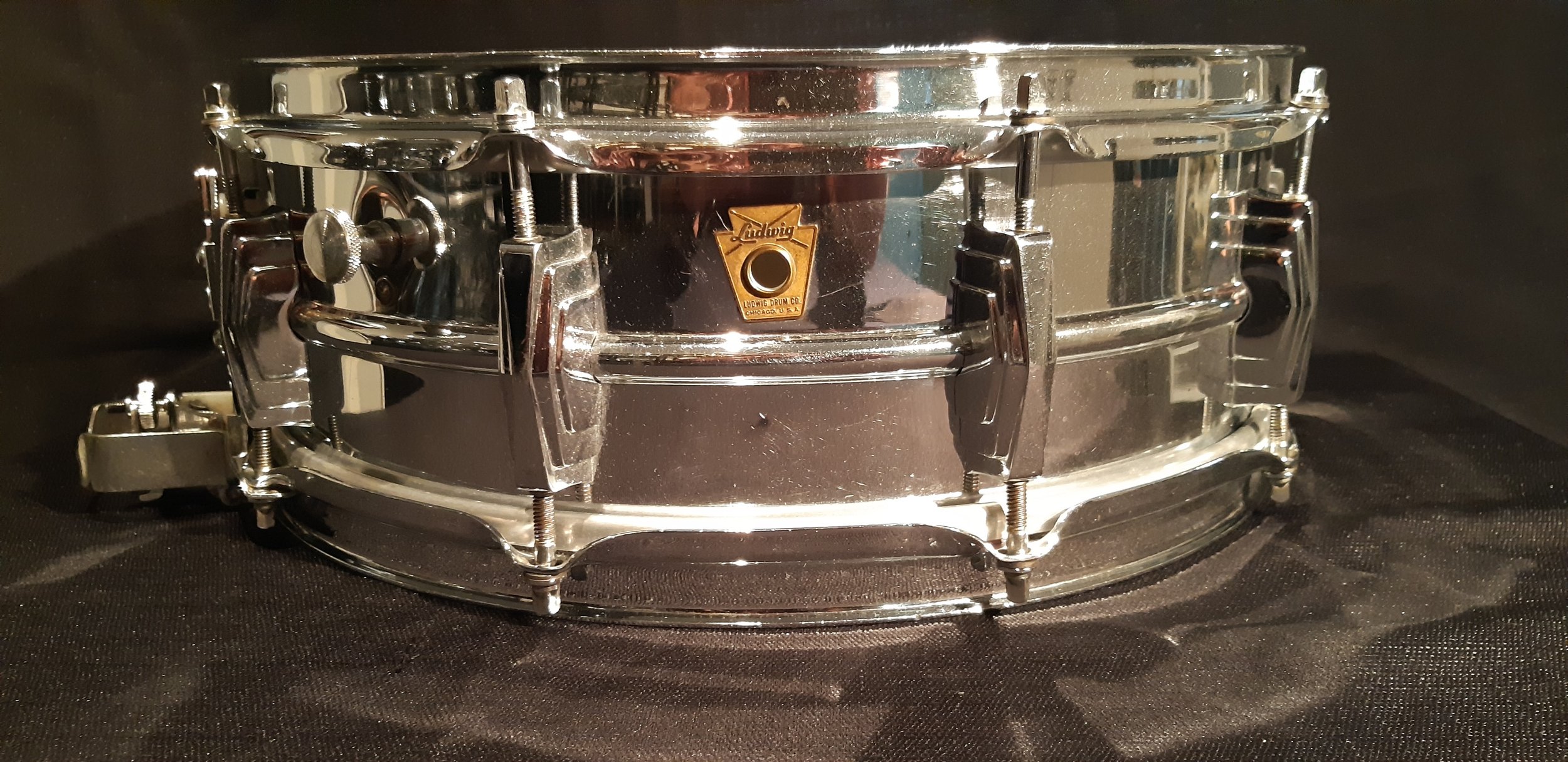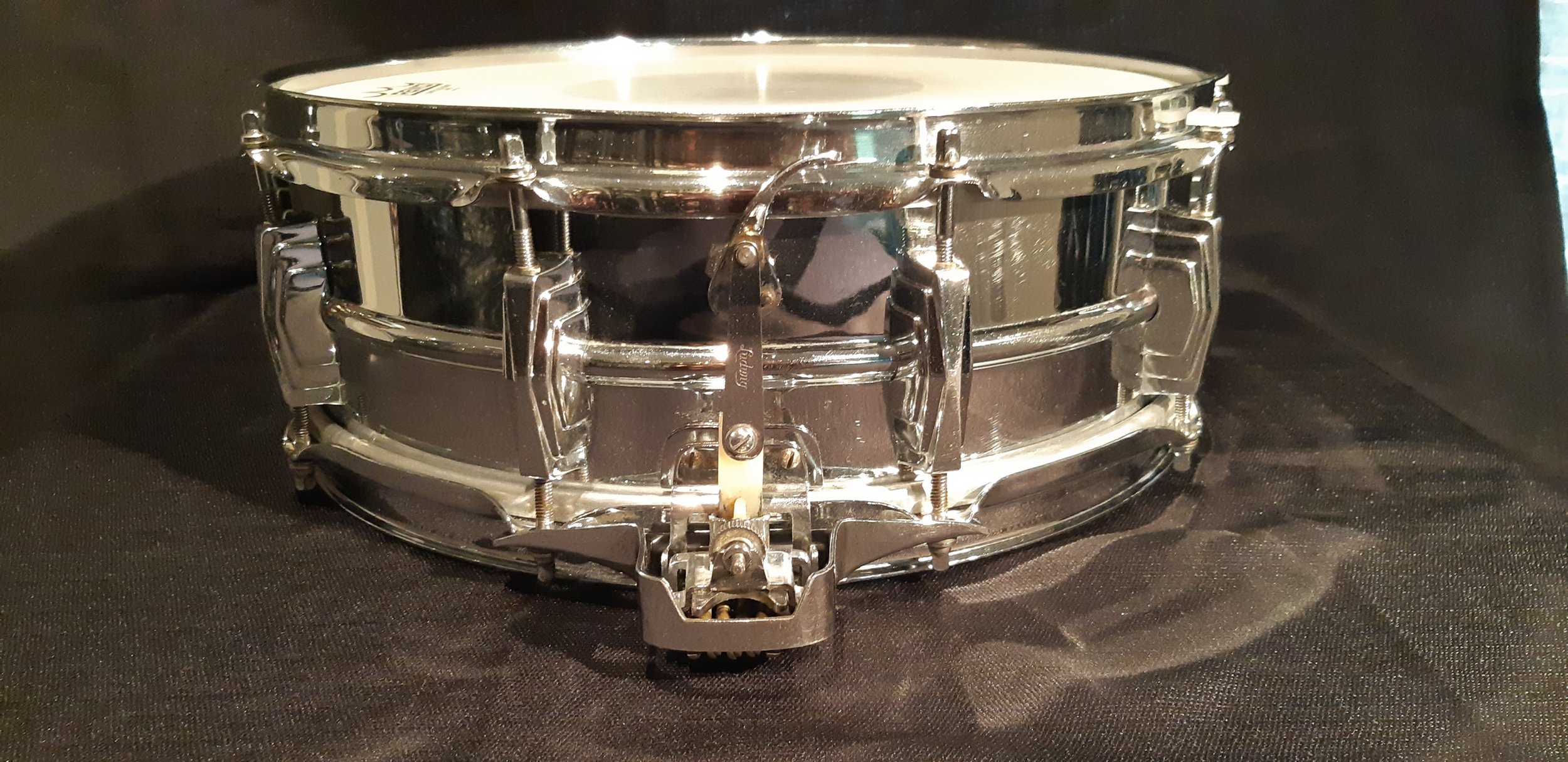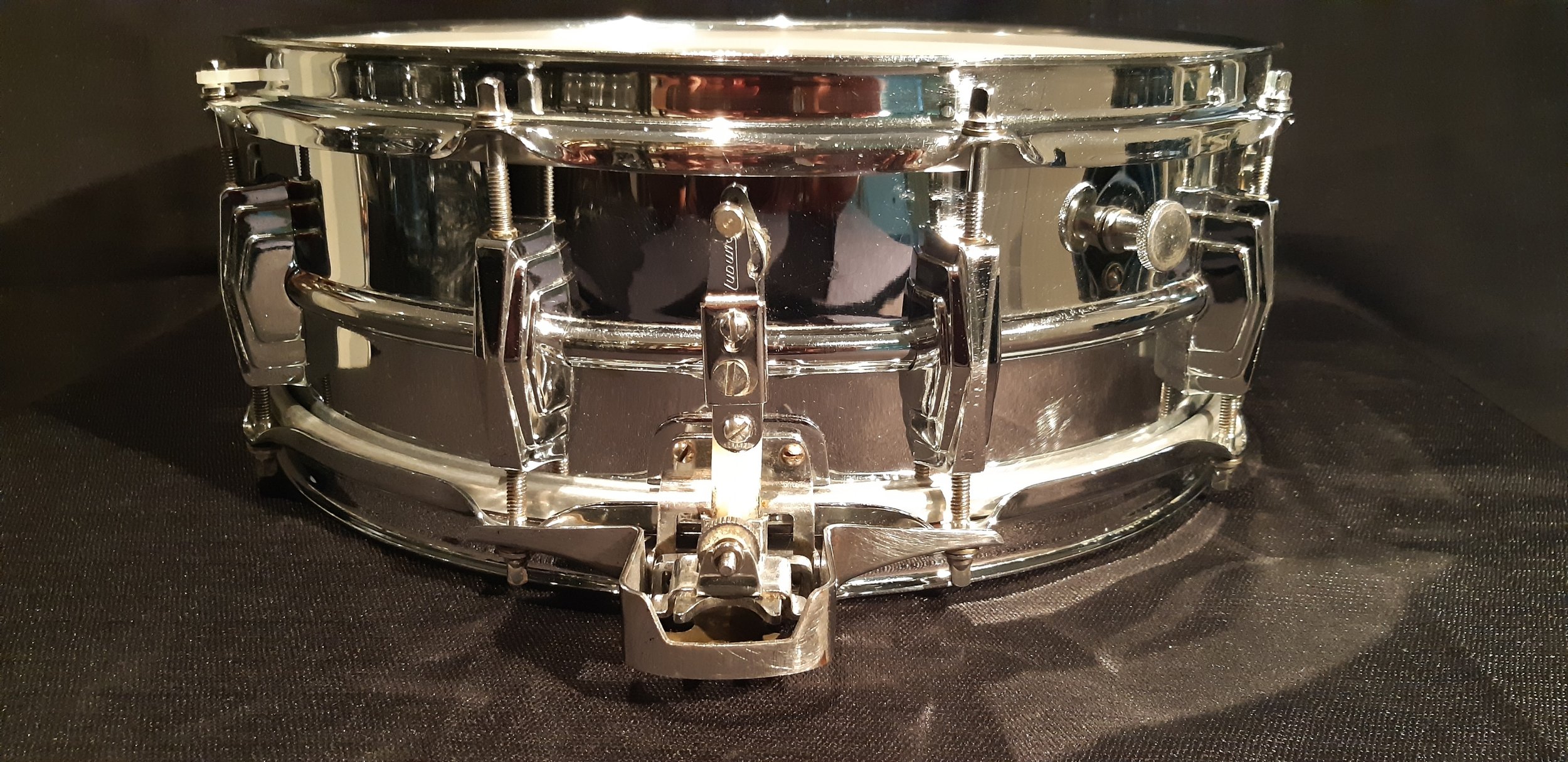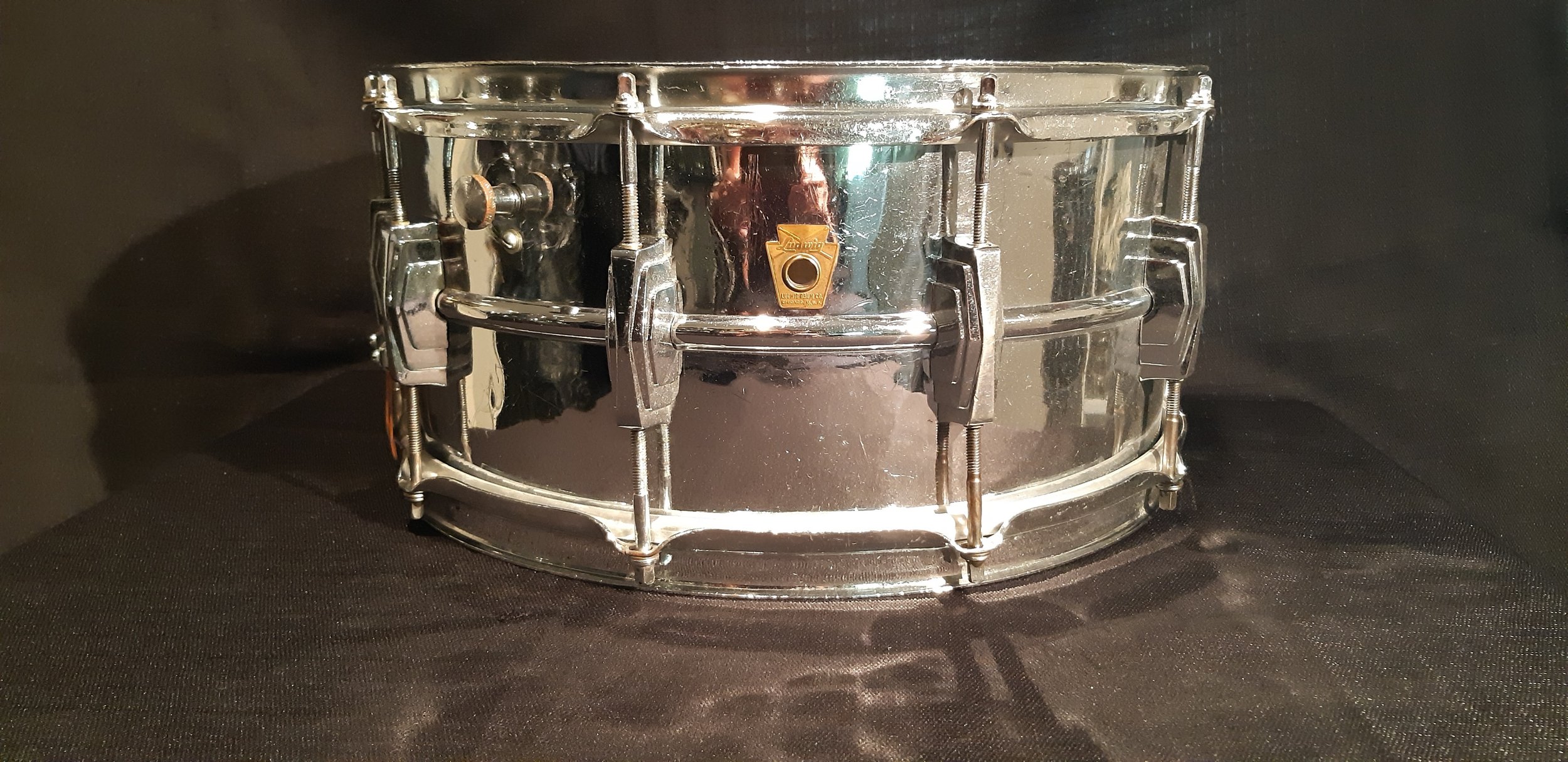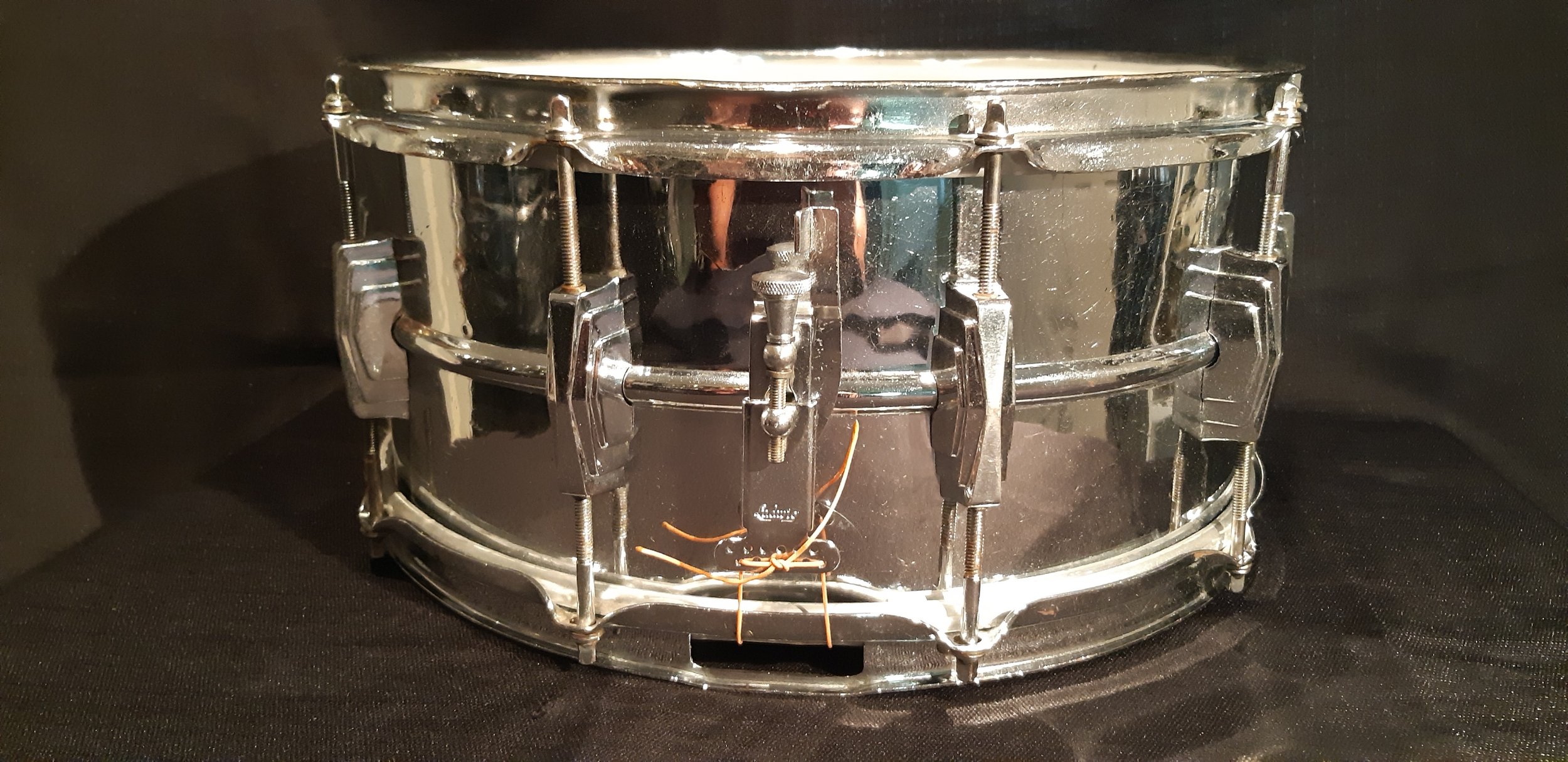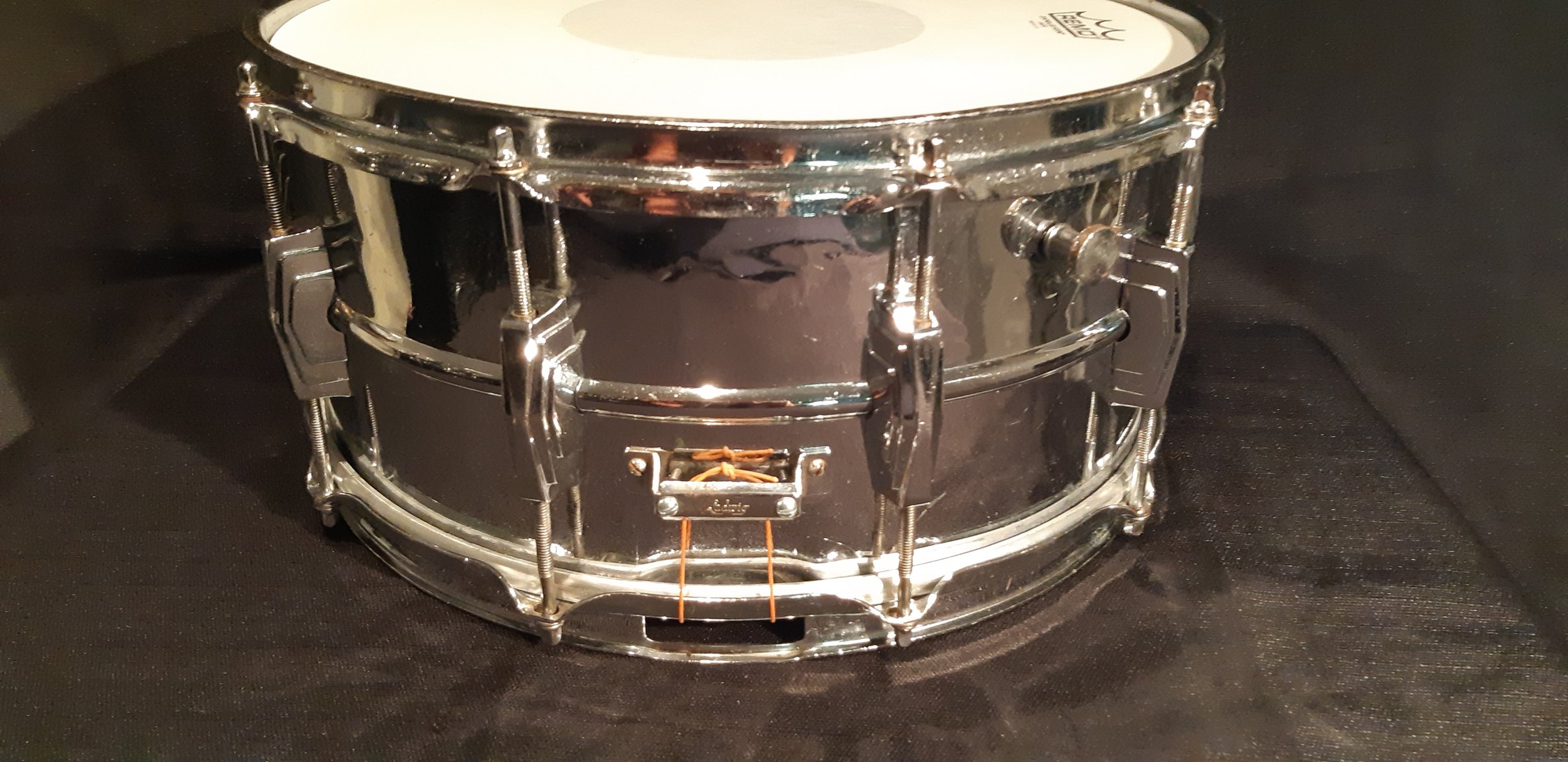In 1929 Ludwig & Ludwig sold their company to CG Conn. William F. Ludwig bought a factory in 1937 to carry on the business under the name of WFL Drum Company. In 1955 the Ludwig family bought back the rights to use the Ludwig name from Conn. The Super Ludwigs were among the first metal snare drums catalogued by the Ludwig company.
The Super Ludwig snares were introduced in about 1958 but were only available in 5” depth and chrome-plated brass or lacquered brass finish. The lacquered brass finish drums are extremely hard to come by in Canada. In fact, I don’t think I have even seen one of them since I started collecting vintage snare drums over 20 years ago. I have four 2nd Generation Super Ludwigs in my collection. They are all chrome over brass finish.
The first version of the P-83 Syncromesh strainer featured the WFL stamp slotted protusion on the left side. This strainer is found on the very earliest 2nd Generation Super Ludwigs. By 1959, this strainer was replaced by the second version P-83, originally with the same WFL keystone stamp. However, that was quickly replaced with the Ludwig stamp.
There were very few Super Ludwigs produced with WFL badges which makes them very rare. The Transition Badge, as known by collectors, had the Ludwig logo on it and was used in 1958 and 1959. I have a 1959 Super Ludwig with the Transition Badge in my collection. The other three Super Ludwigs that I own have the brass keystone badge with no serial number on it.
In 1960 a 6.5” depth option was added. One of the four Super Ludwigs that I own is a 6.5” x 14”. The other three are 5” x 14”. Both the 5” and 6.5” were offered in chrome or lacquered brass finish. The 1958 – 1960 brass Super Ludwig drums were formed from strips of rolled brass welded together with a vertical seam. The seam is clearly visible on the inside of the drum. The shell flanged downward from the bearing edge, then folded back toward the shell. They also came with a ¾” muffler knob and crimped snare beds. The snare bed was formed by crimping it which left a deep indentation easily visible from a distance. This in itself does not signify a brass shell as the first few aluminum shell models were also given a crimped snare bed. I did own an aluminum Super Ludwig at one time but I traded it for another drum.
In 1960 – 1963 the brass keystone badge did not have a serial number. This badge was made with an acid-etching process and the logo and lettering stand up above the matte finish background. In 1961 the lacquered brass shell was no longer offered as an option. The Super-Sensitive was reintroduced in 1961. From 1962 – 1963 the badges were bent in the middle before grommeting to make them more closely follow the contour of the shell and prevent corner snagging.
In 1963 the name of the drum was changed from Super Ludwig 400 to Supraphonic 400. Serial numbers were stamped on badges beginning in 1963. The first ones were 4 digits, then 5 digits in 1964 and 6 digits in 1965.
All of the brass Super Ludwig snare drums have a unique sound. They are great additions to my collection and I use them often to play live and record.
Danny Bilan - Our Man in Canada
*** Information for this article was taken from “The Ludwig Book” by Rob Cook (2003)

